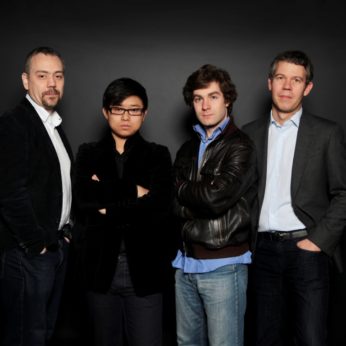Composer: Anton Webern (b. 1883 - d. 1945)
Performance date: 02/07/2011
Venue: Bantry Library
Composition Year: 1909
Duration: 00:11:51
Recording Engineer: Anton Timoney, RTÉ lyric fm
Instrumentation: vc, pf
Instrumentation Category:String Quartet
Artists:
Quatuor Diotima (Naaman Sluchin, Yun Peng Zhao [violins], Franck Chevalier [viola], Pierre Morlet [cello]) -
[quartet]

Copyright © 2024 West Cork Music. All rights reserved.
Designed and developed by Matrix Internet